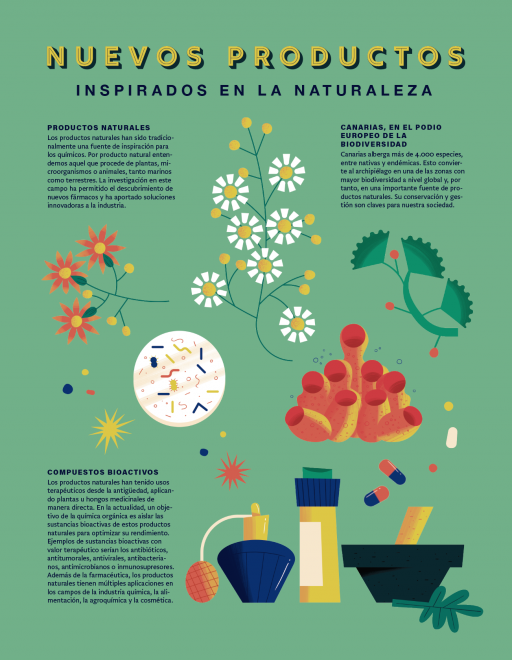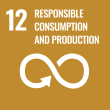Pharmaceuticals inspired by nature
Chemistry has made it possible to modify products obtained from plants, micro-organisms or marine animals into effective treatments for many diseases.
Natural products have been allies of medicine since time immemorial. Nature itself is still a key factor in the development of new treatments to cure people and may continue to be in the future. The third of the Sustainable Development Goals (SDGs) calls for ensuring healthy lives and promoting well-being for all ages, but these priceless 'goods' are easily snatched away when a health crisis takes hold, such as the one we are currently experiencing with Covid-19. In our pandemic reality, discovering a treatment, cure or vaccine has become an immediate need for the population. Consequently, the products conferred by a natural environment as rich as the Canary Islands can make the difference, to achieve these much-needed improvements in the health and welfare of the population.
Antibiotics such as penicillin or erythromycin, antitumour drugs such as trabectedin, or analgesics such as morphine have several things in common. All have changed the course of medicine and all come directly from a plant, micro-organism or marine animal. This is where chemists come in, since they have enough expertise to make something apparently of little use into an indispensable resource for hospitals around the world. Chemistry makes it possible to isolate the active ingredients from the source organism and improve their applications. "Chemical synthesis has made many drugs of natural origin available to us in the quantities needed for therapeutic uses, even though they are scarce in nature," explains Antonio Hernández Daranas, a chemist at the Institute of Natural Products and Agrobiology (IPNA-CSIC). This is the case of anti-cancer drugs for instance, more than 88% of which are related to the structure of a natural product or are directly derived from one.
At present, most drugs originating from plants continue to hold a prominent position, despite advances in their field, such as the development of syntheses, combinatorial chemistry or biotechnological processes like microbial fermentation. In fact, 66 % of the new drugs approved have some relation to the direct structure of a natural product, a figure that may increase depending on the pathology to be treated.
The Canary Islands occupy a strategic position in this struggle, as they are a reservoir of unique natural products that are impossible to find in other parts of the world. The islands are home to an enviable biodiversity at world level - more than 4,000 species, both native and endemic. It is due to this characteristic that in the last decade of the 20th century the archipelago became considered as a "hotspot of biodiversity". It shares this title with the Azores, Madeira and Salvages, as together they form the Macaronesian region. Only 33 other regions on the planet are fortunate enough to belong to this select club.
The economic possibilities opened up by research into these products are endless and not restricted to the pharmaceutical sector. The commercial outlets for natural products range from manufacture of disinfectants for the chemical industry to the invention of new food sweeteners and flavourings, and from production of pesticides and crop protection products to the development of new cosmetic fragrances.


